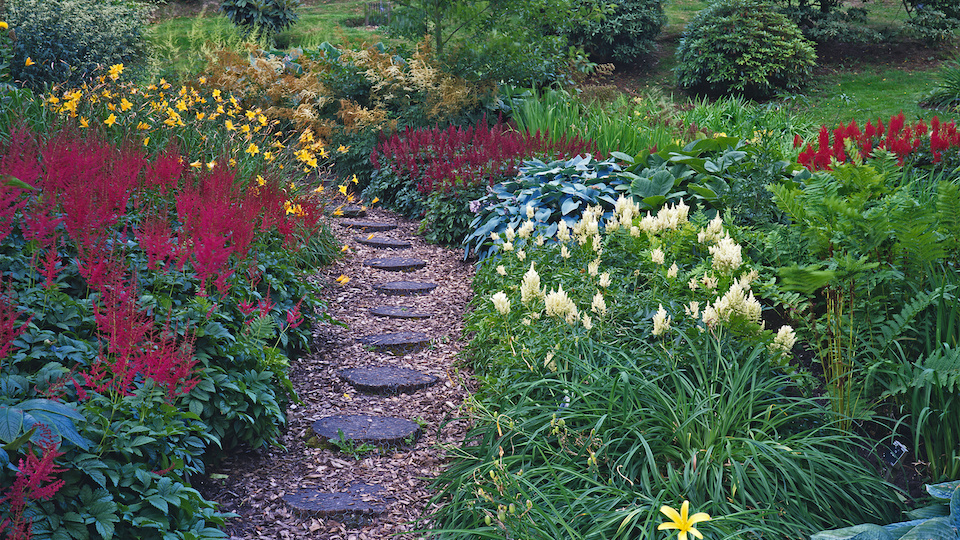You may have heard the term bog garden, but perhaps you are unsure what it is and whether or not it would fit well in your garden landscape. A bog garden is technically any area near a body of water that creates moist soil perfect for plants that thrive in such conditions. So, if you have a nearby body of water and wet soil surrounding it, you are in luck, a bog garden is a perfect option. Let’s dig into just how to create the most fantastic bog garden ever.
My very first experience with bog gardens was when I was living in southeast Virginia had ⅓ of my backyard that stayed wet all year round. The reason for this was that it was slightly low lying and also that there were numerous streams nearby that provided an almost constant source of moisture to this area. At first, I was distraught that it remained so wet and was frustrated by what to do. Then, it dawned on me, it was a perfect spot to create a beautiful, albeit somewhat swampy, bog garden!
After some trial and error, I finally created a space for plants that love to have wet feet. This moist habitat drew all sorts of wildlife and provided an endless source of beauty and entertainment.
Here is what I learned about bog gardening and how to avoid the most common mistakes – which I seemed to make over and over again until I actually got it!
The difference between a pond and a bog
Keep in mind that a bog garden is a fantastic alternative to a pond. The difference is that a pond has standing water, and a bog garden is a place where there is slow-draining waterlogged soil that mimics boggy conditions found in nature.
Assessing
Take the time to watch the area where you wish to install a bog garden. Check to see how wet it stays,how sunny it is, if it floods, and don’t forget to test the soil so that you know what amendments might be needed.
Planning
Once you know the best place to put your bog garden, it will be time to mark out the area where you will plant. Use a rope or a garden hose to mark your garden area. Choose a space that is level and clear from overhanging trees. You will need a space that gets at least six hours a day of sunlight. Next, be sure to draw your garden and map out what plants you are going to use. Remember, it is a bog garden; plants should be moisture-loving and suitable for your growing region. If you are unsure, visit your local Cooperative Extension office, and they can help with your planning.
Digging and lining
Once you have your bog outlined, it starts to get fun. Grab your shovel and begin to dig a hole about 3 feet deep, putting the soil you excavate to one side. Line the hole with a butyl liner. Make some drainage holes in the liner using a fork.
Add grit or gravel
Now that you have your bog garden lined, it is time to add some substrate. I like grit or gravel, as it helps provide excellent drainage and will ensure that the soil does not block the holes that you created in the liner.
Time to backfill
Now it is time to backfill your hole. Fill the hole with the soil that you removed, adding some compost and mixing it in.
Planting time
Place your plants in your bog garden, paying attention to spacing and planting depth. Water thoroughly until well established. After this, the area should become naturally waterlogged, and plants will thrive.
Tips for a successful bog garden
- Be creative when it comes to plants – Plant some groundcover as well as taller plants that birds will perch upon. Be as creative as you can, but be sure to cover the ground and use your vertical space well.
- Plant for all-season color – Plants bloom at different times in the season. Be sure to choose a variety of plants so that you have something blooming all the time. For example, marsh marigolds bloom in the spring, yellow flag iris in the summer, and agrimony in early fall.
- Water in times of drought – Even though it is a bog garden, your plants still need to be watered during times of drought. One trick that works well is to bury a leaky hose or drip hose around the edge of your bog and connect it to your central hose. This will save a great deal on water and ensure that your bog garden stays sufficiently moist.
- Remember that some bog plants can be invasive – Be sure that you know which species in your garden can become invasive. Snip your plants regularly and consider leaving invasive plants in pots to keep them under control.
- Remember to leave plenty of space for your plants – Bog plants can be large and have a generous root system. This means that you need to leave plenty of room between plants, keeping in mind their size at maturity.
- Create a seating area – Create a seating area near your bog garden so that you can enjoy its beauty.
Happy bogging!
-Susan Patterson



